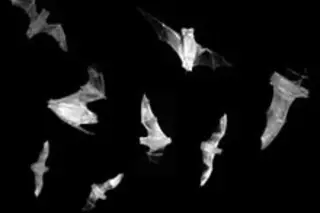Wind power may prove to be a promising source of clean energy, but it can also be deadly to bats. Not only can the animals be sliced by the blades of wind turbines, but the sudden drop in air pressure around the turbines can also cause bats' lungs to explode. An electromagnetic field emitted near the turbines, however, may help bats steer clear of them, according to a new study published in the Public Library of Science One. Bat casualties near wind turbines have proven to be significant: In 2004, over the course of six weeks, roughly 1,764 and 2,900 bats were killed at two wind farms in Pennsylvania and West Virginia, respectively
. If wind power continues to become increasingly prevalent, so too might the turbines become a growing threat to bat populations. "Given the growing number of wind turbines worldwide, this is going to be an increasing ...














